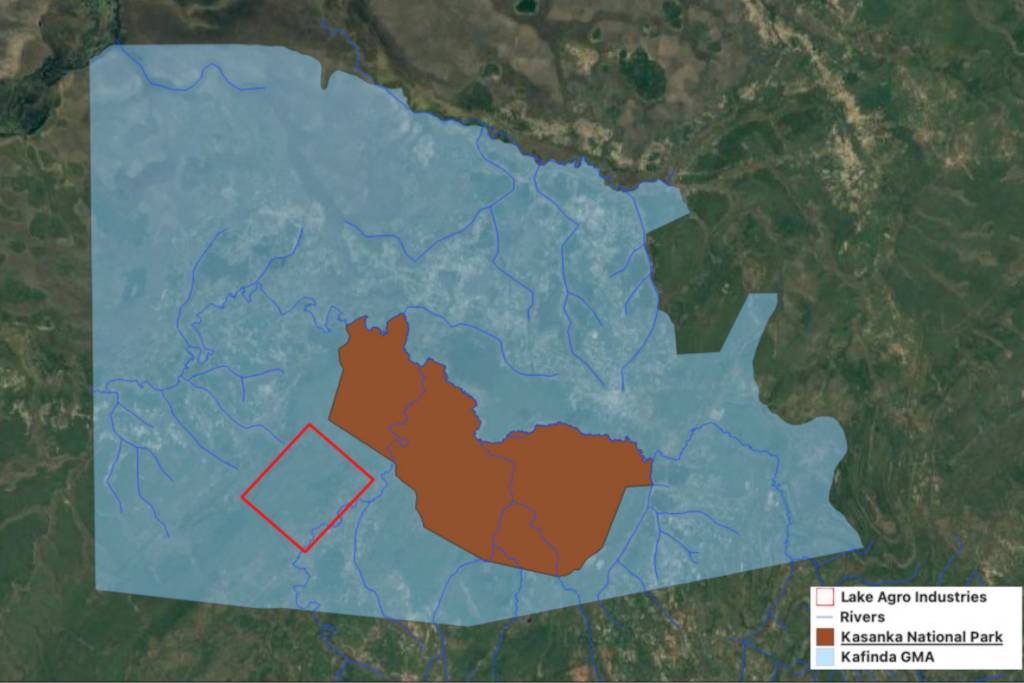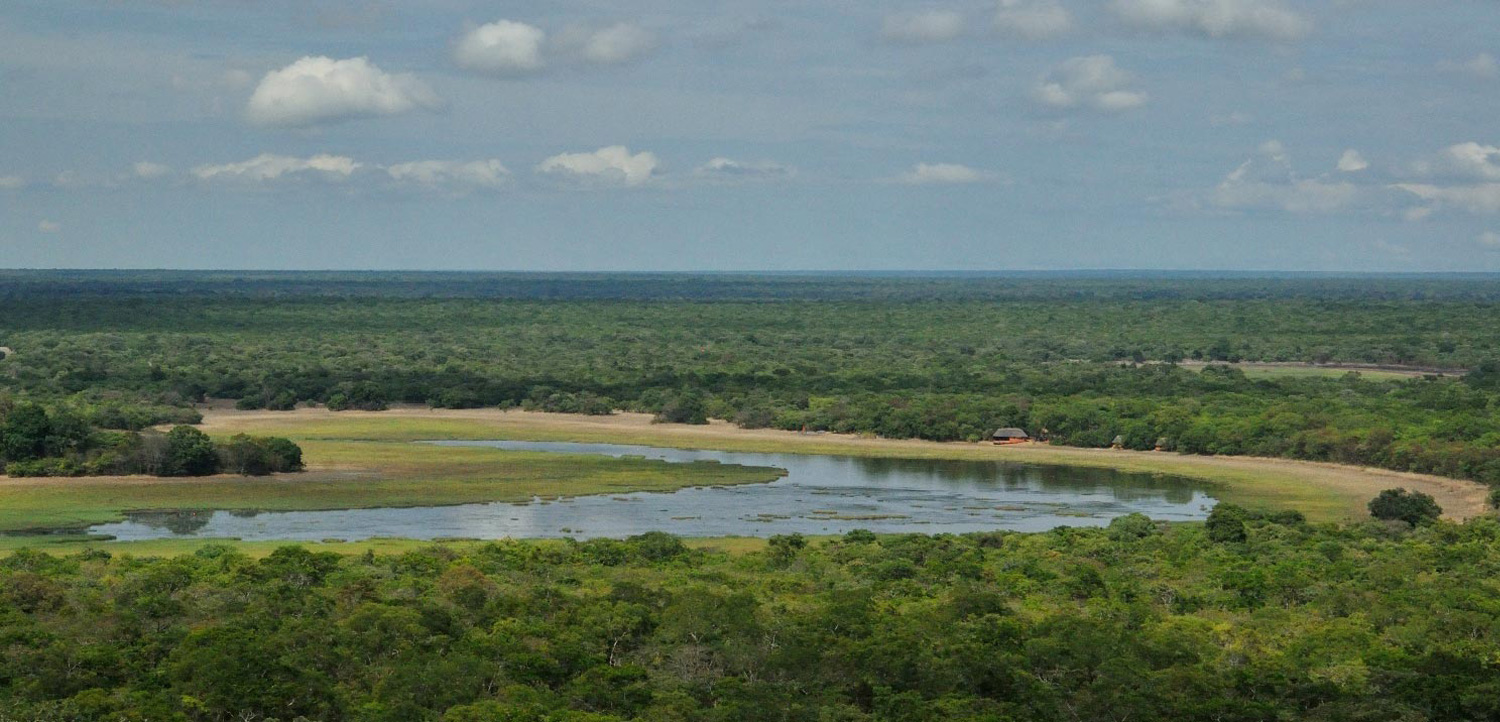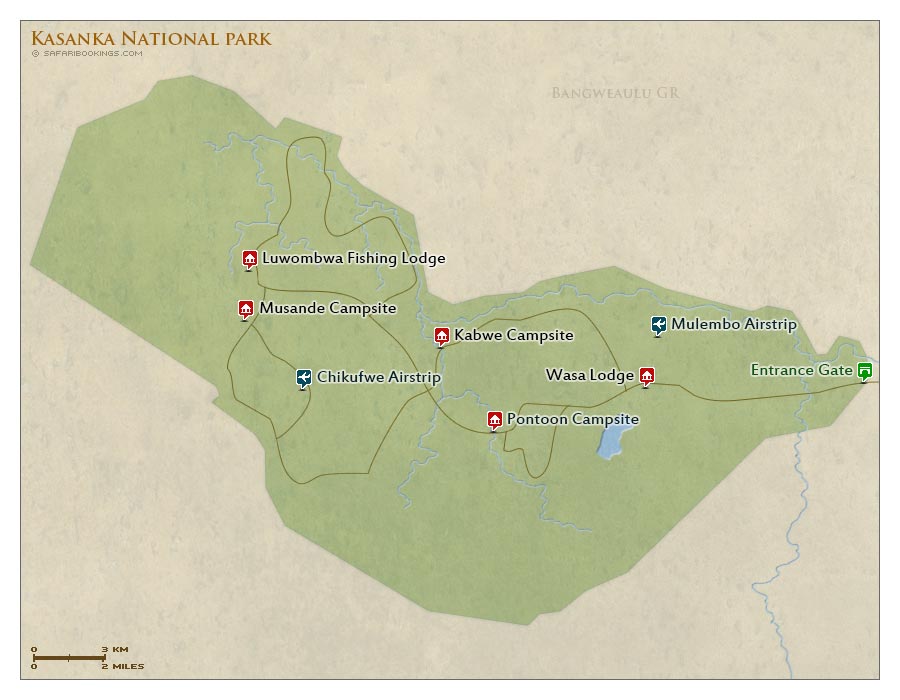A tranquil haven is one of Zambia’s smallest national parks, Kasanka National Park is located on the southwestern side of the Lake Bangweulu basin. Situated approximately 500 Km from the Zambian capital city of Lusaka, Kasanka hosts a stunning gathering of many million Straw-Colored Fruit bats.

Every year, up to ten million fruit bats travel to Kasanka National Park’s wetlands for a few months. It is an internationally noteworthy ecological spectacle that attracts visitors and contributes to Zambia’s fastest-growing economic sector. This is the greatest mammalian migration on the planet.

Because of the unique flora and fauna that it sustains, Kasanka National Park is given the highest level of protection in Zambia. The environment immediately surrounding the park is vital to the entire ecosystem. The Tanzanian Lake Group and its subsidiary Lake Agro Industries are now illegally deforesting this area. They plan to plant wheat, maize, and soya, among other things.
The Kafinda Game Management Area (GMA) surrounds the park has been classified as a protected area, however, this is being disregarded. In the zone, Lake Agro Industries has destroyed over 560 hectares of natural forests. The destiny of the entire region is now in jeopardy.
They’ve submitted a formal Environmental and Social Impact Assessment (ESIA) to the Zambia Environmental Management Agency (ZEMA) for consideration, requesting permission to develop commercial agriculture and associated infrastructure over a 7,000ha footprint inside the GMA, less than three kilometres from the national park where the bats roost. The ESIA’s outcome will be announced on June 18, 2021, however, the actual ESIA is still not available on the ZEMA website, making public comment nearly impossible.

Kasanka National Park is home to a multitude of unique natural features including:
- The world’s greatest mammal migration. A seasonal colony of up to 10 million straw-colored fruit bats, a substantial element of the IUCN Red List Near-Threatened species’ subequatorial population and a popular tourist attraction.
- The second-longest bird list of all Zambian national parks and Important Bird and Biodiversity Areas. It is home to a highly diverse avifauna that includes many threatened species.
- Important populations of the scarce sitatunga, offering the best viewing in Zambia and beyond; the IUCN Red List Near-Threatened puku; and the little known Kinda baboon.
- A healthy and diverse complex of rivers. The park is of great importance to the ecological and socio-economic functioning of these watercourses.
- A unique small-scale diversity of intact habitats, including threatened habitats such as the mushitu and mateshe evergreen forests, hosting enormous biodiversity.

The clearing began in 2019, far before any formal licenses were obtained. The Kafinda GMA is a protected area under Zambia’s Protected Area Network. The General Management Plan (GMP), which was signed by the Ministry of Tourism and Arts and the Zambian Wildlife Authority, is designed to put this into practice. This divides the territory into zones and specifies the kind of land uses that are allowed in each. The ‘Wilderness Zone’ and the ‘Development Zone’ are separated by the Lake Agro footprint.
The wilderness zone is intended to be used for “tourism and habitat preservation.” “The zone’s goal is to provide low-volume tourism.” With non-permanent structures, it allows for minimal development. Hiking, game viewing, and photographic safaris are the main visitor activities.” There are no roads, villages, hunting, or farming allowed.
According to research, these bats migrate across great distances from nations such as the DRC, South Sudan, and Tanzania. They provide vital ecological services along the route, like as seed dissemination and reforestation promotion. The effects in Kasanka will be felt throughout Central Africa.

The Kasanka Trust believes that approving the proposals would be careless on ZEMA’s part. On a global scale, the GMA’s site selection and occupancy would have disastrous consequences for biodiversity protection.
It should also be mentioned that Gulf Adventures, a Lake Group company, has occupied around 5,000ha of pristine forest and built a game farm elsewhere within the Kafinda GMA. The introduction of non-native animals such as ostrich and impala, which are not native to the area, is a further violation of the GMP, which is intended to support the GMA’s preservation.
There should be no way for the proposal to be approved, in theory. It’s totally within a protected region and would have disastrous effects for a national park of global biodiversity conservation significance. It has the highest level of protection possible on paper.
Source: africageographic.com
For all accommodation rates, please contact us.

